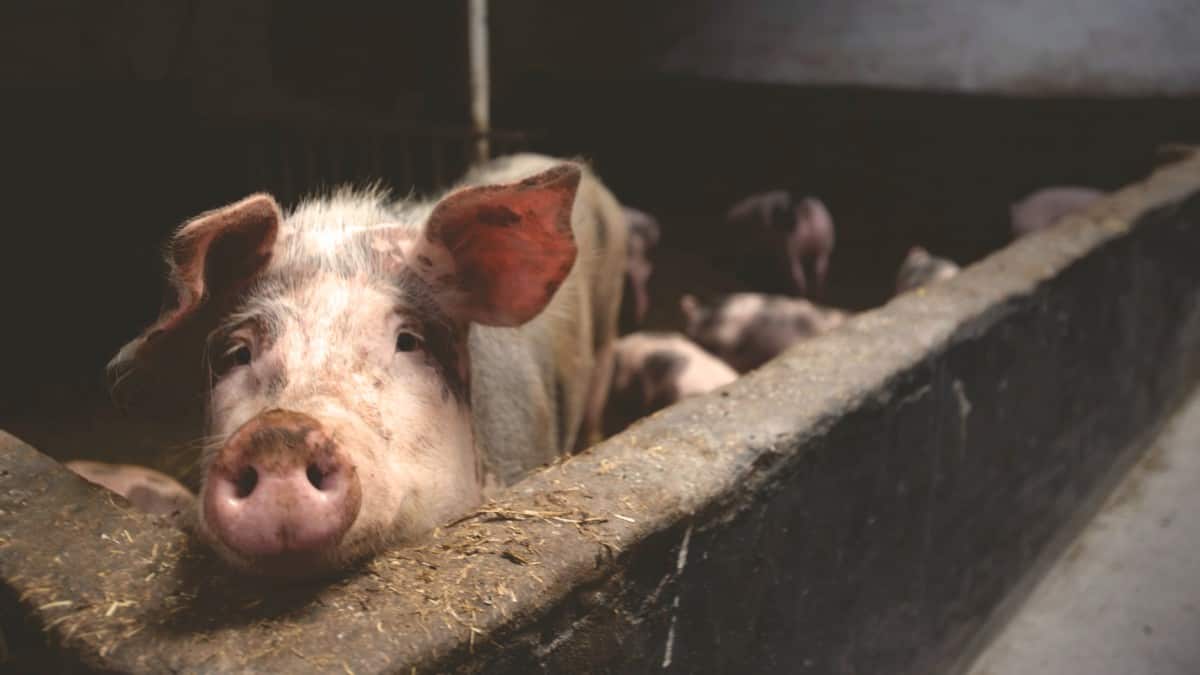Today we are going to look at how best to breed pigs. Pigs are bred for several reasons, for food consumption, for the materials industry as leather, for the pet trade industry and in some countries, they are used for finding truffles.
- Food Consumption
- Materials Industry
- Pet Trade
- Truffle Hunting
Food Consumption
Pigs are some of the most versatile meats used in the food sector. They can be used as fresh meat in the form of pork, gammon and ribs. Pigs have been used as cured meats for centuries in the form of bacon, salami and countless other forms.
Pigs have also been considered as delights in many parts of the world and pigs’ brains with eggs is considered a fantastic treat in some parts of the world. Most of the commercial breeding of pigs falls into the food sector.
Materials
In days gone by, pigs were a fantastic source of leather. This was because a full-grown pig are hardy eaters and they breed quick quickly. And are comparatively low maintenance compared to other livestock such as cattle.
Pigs were often used for leather in many material industries, for clothing, weapons and construction. Today pig leather would be used more so for high fashion and tool binding.
Pet Trade
Many people have been fascinated with pygmy pigs. These are pigs that are smaller their non-dwarf counterparts. This has resulted in the booming of the pet trade for pigs, though it must be noted that recently, there have been increased regulation around the sale of these pets. You must also be careful of your stock as interbreeding has created several problems.
Truffles
This is more for a hobby than anything else but if you have pigs who have an excellent scent of smell and are able to find truffles, this may be a little goldmine for you. Black truffles can retail at $100 per ounce while white truffles can retail at $150+ per ounce.
Having pigs who can be trained to find these truffles but not eat them, are worth their weight in gold. Either as selling the truffles they find yourself or selling the pigs to someone who would be interested in buy pig stocks.
Breeding Types
For the purpose of this blog, we are going to split breeding pigs into two broad categories. One for pygmy pigs and one for the rest. This is because breeding practices are similar for pigs across the various sectors they are bred for, aside for the pet trade.
We will now look at:
- Getting Started
- Reading the Signs
- Diet
Getting started – Regular Pigs
We are going to assume that you are breeding pigs for meat production, as this accounts for the vast majority of pig breeding. In that case you will need to be on the ball from the get go.
This means when you are sourcing your pigs to start off, you will need to make sure that the stock you are sourcing from is of high quality. Questions you will need to ask are meat to fat ratio. How many piglets are born on average in a litter? How many male vs female piglets are born in each litter?
You will want to know the meat to fat ratio in your stock because this will affect the value of your meat upon sale. Though some fat is to be expected, the less fat the better. On average about 57% of the hog will end up in retail. This should work as a guide in determining if the stock you are sourcing from is adequate or not.
You will want to know the volume of piglets per sow as this will determine the overall value of your efforts. The more piglets you have the more money you will make.
However, it is not as black and white as that. You will need to know the average weight of the piglets and the survival rate. If you have a sow who produces 15 piglets (average being 10) but if 7 of them are underweight or die, then you are worse off. Depending on your capacity, you may need sows who produce more female pigs than male if you are looking to expand.
Getting started – Pygmy Pigs
In this case a lot of the above doesn’t apply as you are not looking for quantity but quality. In fact it would be more manageable if you had several breeding pairs that did not produce too many piglets. Remember that your pygmy pigs are not as large as regular pigs, if they produce too many piglets, this can lead to complications at birth.
You will also want to enquire about the lineage of each pygmy pig. This is because a lot of the pygmy pigs are only small because they are expressive recessive genes that make them smaller.
However one of their parents was a regular sized pig then there is a chance that their offspring will also be regular sized. Not only will this be counter-productive to your efforts, but it will also very likely be lethal to your pygmy pig mother.
Reading the signs
Luckily for this section, you can use the same signs for both types of breeding. A sow or gilt (virgin female pig) will complete their oestrus cycle every 21 days or 3 weeks. You will know that she is receptive when you notice a discharge coming out of the vagina or the outer vagina (vulva) is swollen. Your gilt or sow will be restless and may attempt to mount other sows.
For gilts, you will want to mate them on the first day you notice this and then again in 24 hours. For more experienced sows, you will want to do this on the second day and again in 24 hours.
You will find that hogs (male pigs) are able to breed with more females than either sheep or cattle. A younger hog (less than a year old) will be able to mate with 12 sows in a pasture environment or they can be put in a more enclosed individual environment and this number can double to 24. A more experienced hog can mate with 30-40 sows or gilts in pasture or 50 in stalls.
Diet
Your sow will have different dietary needs to when they are gestating (pregnant) vs lactating (producing milk). It will not be as much feed needed when they are lactating. This will have a lot to do with the conditioning of your sow. This is usually a visual assessment of 1-5 of your sow. 1 is considered underweight with 5 being overweight. You would ideally be looking for a score of 3-3.5. You do this by looking at the fat in the sows back at the position of the hip bones.
You will find that the feed you use to feed your sows will be determined by this score. If you need your sow to gain weight, you will use a higher number feed to help her gain weight. If you need her to lose weight, something lower. And if she’s at the ideal weight, you will use feed that has a score of 3.
This would the same for pygmy pigs as it would be for regular pigs. The specific numbers will vary from pig breed to pig breed. This will covered in a later blog.

